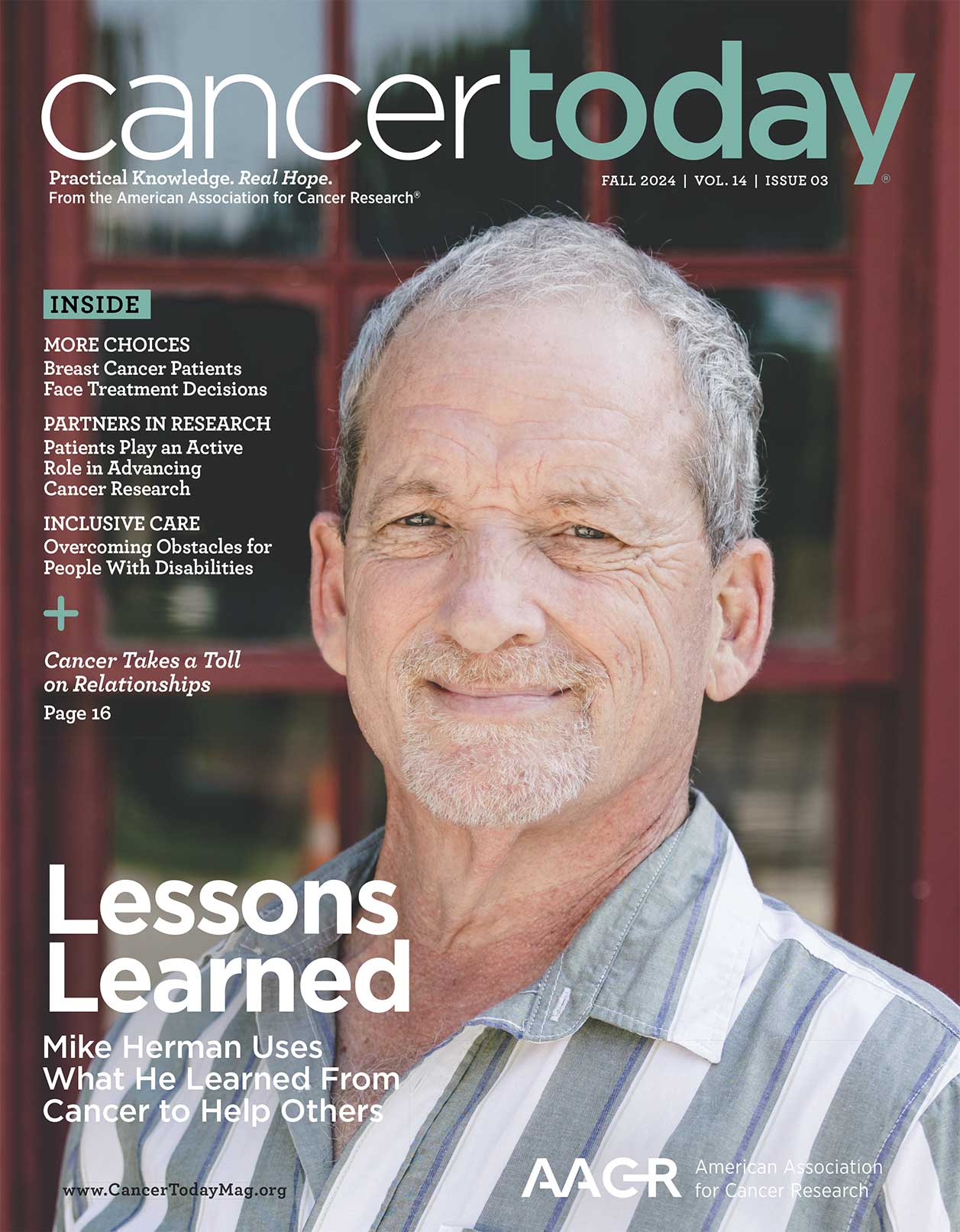
Challenges & Choices is an ongoing series where we tackle the most difficult questions in cancer care. From finances to end-of-life care, we will explore how you can be prepared with practical information, ways to find emotional support, and stories from people who have been there.
FOR CANCER PATIENTS, choosing the type of treatment they want, especially for end-of-life (EOL) care, is an important decision. Research shows that more patients today prefer to die at home, surrounded by loved ones.
Whether you want to pursue every lifesaving treatment or you want, at some point, to prioritize comfort and quality of life, sharing your wishes with loved ones and medical providers long before it’s necessary through what is known as advanced care planning can be an important tool for making sure your priorities are considered throughout your care. As a recent study in the Journal of Pain and Symptom Management found, people who did advanced care planning were less likely to die in a hospital or get aggressive treatment during end-of-life care.
What Is Advanced Care Planning?
Advanced care planning involves discussing the possible path of treatment based on how the cancer progresses. “Advance care planning helps you and your loved ones think and talk about the type of care you’d like to receive at the time that you’d like to receive it, and documenting those wishes in an advance directive helps ensure that you receive the type of care you want,” says Caleb Tiller, vice president of marketing, communications and membership for the National Hospice and Palliative Care Organization (NHPCO).
Three questions are essential to answer in advanced care planning:
- What treatment do you want and when?
- What treatment and measures do you not want (such as resuscitation or life-support machines)?
- If you are unable, who do you want to make decisions regarding your treatment for you?
In many cases, advanced care planning includes completing advance directives—legal documents that outline instructions for your care in the event you are unable to communicate with your medical providers. The National Institute on Aging lists a number of these, including:
- Living will: This document lists the types of treatment you do and do not want as well as when those treatments should be applied.
- Power of attorney for health care: This document names the person who has authority to make decisions about your treatment if you are unable to communicate with your medical providers.
- Do not resuscitate (DNR) order: A DNR instructs medical providers to not use any lifesaving methods such as CPR if your heart stops beating.
- Do not intubate (DNI) order: A DNI notifies medical providers that you don’t want to be on a ventilator to help you breathe.
While DNR and DNI instructions likely are included in a living will, having separate advanced directives leaves no doubt what the patient’s wishes are when decision-making time is critical.
CaringInfo.org, a program of NHPCO, offers each state’s advance directives forms, as well as helpful tips for completing them, free of cost, Tiller says.
Benefits of Advanced Care Planning
The primary benefit of advanced care planning is to ensure you receive the type of care you want at the time you want it. According to the National Cancer Institute, approximately one-third of people with advanced cancer continue chemotherapy treatment near the end of life, but most choose to stop chemotherapy and switch to comfort-based treatments.
Another benefit of advanced care planning is taking away the stress and uncertainty of loved ones who may be put in a position to decide your medical treatment because you are unable to do so. “Having advance care planning conversations, and expressing your wishes in an advance directive, relieves your loved ones and representatives of the need to guess what you might want, and helps them communicate with medical professionals on your behalf,” Tiller says.
For many cancer patients, their desired outcome is comfort-based EOL care. According to the Journal of Pain and Symptom Management study, advanced care planning was associated with significantly lower odds of chemotherapy, intensive care, hospital admissions, and other measures of intensive treatment near the end of life. Patients engaged in advanced care panning also were more likely to have DNR orders.
In addition, people who used a communication-focused approach to advanced care planning (not just relying on advanced directives), had a greater reduction in the odds of hospital admissions during EOL care as well as a greater likelihood of hospice use. “This communication process may include an exploration of preferences for care with the health care provider or more targeted communication about prognosis or goals of care (i.e., prioritization of treatment goals in light of worsening illness),” says Kristin N. Levoy, study co-author and a research scientist at the Indiana University Melvin and Bren Simon Comprehensive Cancer Center in Indianapolis.
Tiller emphasizes how engaging in the process can help you take control of your medical care even when a time comes that you can’t communicate. “Completing your advance directive helps your loved ones make decisions and communicate with medical professionals based on your wishes, beliefs, and values,” Tiller says.
Are there challenging issues you’d like us to investigate? Would you like to share your story about difficult choices or challenges you’ve faced. Email us at editorial@cancertodaymag.org with “Challenges & Choices” in the subject line.
Cancer Today magazine is free to cancer patients, survivors and caregivers who live in the U.S. Subscribe here to receive four issues per year.





